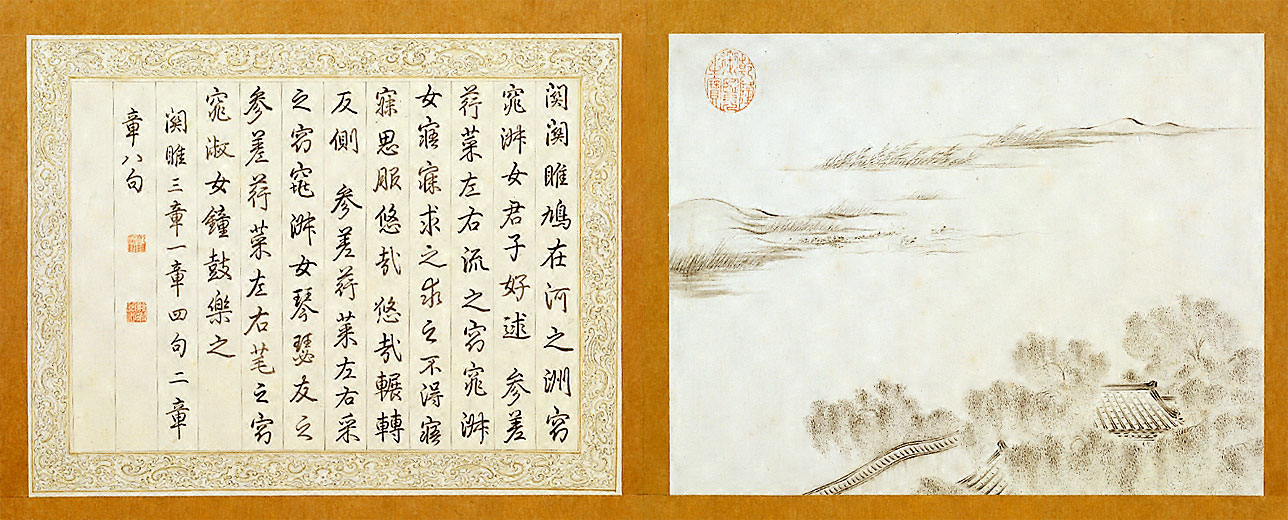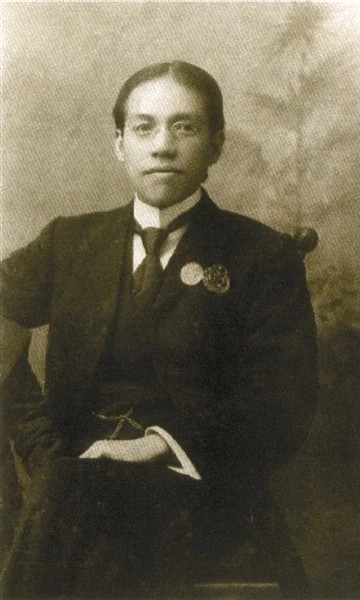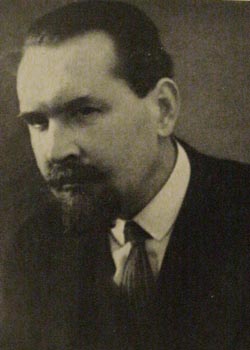|
Vernacular Chinese
Written vernacular Chinese, also known as ''baihua'', comprises forms of written Chinese based on the vernacular varieties of the language spoken throughout China. It is contrasted with Literary Chinese, which was the predominant written form of the language in imperial China until the early 20th century. A style based on vernacular Mandarin Chinese was used in novels by Ming and Qing dynasty authors, and was later refined by intellectuals associated with the May Fourth Movement. This form corresponds to spoken Standard Chinese, but is the standard form of writing used by speakers of all varieties of Chinese throughout mainland China, Taiwan, Malaysia, and Singapore. It is commonly called Standard Written Chinese or Modern Written Chinese to distinguish it from spoken vernaculars and other written vernaculars, like written Cantonese and written Hokkien. Background During the Zhou dynasty (1046–256 BC), Old Chinese was the spoken form of the language, which was re ... [...More Info...] [...Related Items...] OR: [Wikipedia] [Google] [Baidu] |
Written Chinese
Written Chinese is a writing system that uses Chinese characters and other symbols to represent the Chinese languages. Chinese characters do not directly represent pronunciation, unlike letters in an alphabet or syllabograms in a syllabary. Rather, the writing system is '' morphosyllabic'': characters are one spoken syllable in length, but generally correspond to morphemes in the language, which may either be independent words, or part of a polysyllabic word. Most characters are constructed from smaller components that may reflect the character's meaning or pronunciation. Literacy requires the memorization of thousands of characters; college-educated Chinese speakers know approximately 4,000. This has led in part to the adoption of complementary transliteration systems (generally Pinyin) as a means of representing the pronunciation of Chinese. Chinese writing is first attested during the late Shang dynasty (), but the process of creating characters is thought to have begun centur ... [...More Info...] [...Related Items...] OR: [Wikipedia] [Google] [Baidu] |
Classical Chinese
Classical Chinese is the language in which the classics of Chinese literature were written, from . For millennia thereafter, the written Chinese used in these works was imitated and iterated upon by scholars in a form now called Literary Chinese, which was used for almost all formal writing in China until the early 20th century. Each written character corresponds to a single spoken syllable, and almost always to a single independent word. As a result, the characteristic style of the language is comparatively terse. Starting in the 2nd century CE, use of Literary Chinese spread to the countries surrounding China, including Vietnam, Korea, Japan, and the Ryukyu Islands, where it represented the only known form of writing. Literary Chinese was adopted as the language of civil administration in these countries, creating what is known as the Sinosphere. Each additionally developed systems of readings and annotations that enabled non-Chinese speakers to interpret Literary ... [...More Info...] [...Related Items...] OR: [Wikipedia] [Google] [Baidu] |
Hu Shih
Hu Shih ( zh, t=胡適; 17 December 189124 February 1962) was a Chinese academic, writer, and politician. Hu contributed to Chinese liberalism and language reform, and was a leading advocate for the use of written vernacular Chinese. He participated in the May Fourth Movement and China's New Culture Movement. He was a president of Peking University and Academia Sinica. Hu was the editor of the '' Free China Journal'', which was shut down for criticizing Chiang Kai-shek. In 1919, he also criticized Li Dazhao. Hu advocated that the world adopt Western-style democracy. Moreover, Hu criticized Sun Yat-sen's claim that people are incapable of self-rule. Hu criticized the Nationalist government for betraying the ideal of Constitutionalism in ''The Outline of National Reconstruction''. Hu wrote many essays questioning the political legitimacy of Mao Zedong and the Chinese Communist Party. Specifically, Hu said that the autocratic dictatorship system of the CCP was "un-Chinese" a ... [...More Info...] [...Related Items...] OR: [Wikipedia] [Google] [Baidu] |
Liang Qichao
Liang Qichao (Chinese: 梁啓超; Wade–Giles: ''Liang2 Chʻi3-chʻao1''; Yale romanization of Cantonese, Yale: ''Lèuhng Kái-chīu''; ) (February 23, 1873 – January 19, 1929) was a Chinese politician, social and political activist, journalist, and intellectual. His thought had a significant influence on the political reformation of modern China. He inspired Chinese scholars and activists with his writings and reform movements. His translations of Western and Japanese books into Chinese further introduced new theories and ideas and inspired young activists. Liang was of Taishanese people, Taishanese descent. In his youth, Liang joined his teacher Kang Youwei in the Hundred Days' Reform of 1898. When the movement was defeated, he fled to Japan and promoted a constitutional monarchy and organized political opposition to the dynasty. After the revolution of 1911, he joined the Beiyang government, serving as the chief justice and the first president of the currency system bur ... [...More Info...] [...Related Items...] OR: [Wikipedia] [Google] [Baidu] |
Water Margin
''Water Margin'' (), also called ''Outlaws of the Marsh'' or ''All Men Are Brothers'', is a Chinese novel from the Ming dynasty that is one of the preeminent Classic Chinese Novels. Attributed to Shi Nai'an, ''Water Margin'' was one of the earliest Chinese novels written in vernacular Mandarin Chinese. The story, which is set in the Northern Song dynasty (around 1120), tells of how a group of 108 outlaws gathers at Mount Liang (or ''Liangshan'' Marsh) to rebel against the government. Later they are granted amnesty and enlisted by the government to resist the nomadic conquest of the Liao dynasty and other rebels. While the book's authorship is traditionally attributed to Shi Nai'an (1296–1372), the first external reference to the novel only appeared in 1524 during the Jiajing reign of the Ming dynasty, sparking a long-lasting academic debate on when it was actually written and which historical events the author had witnessed that inspired him to write the book. The nove ... [...More Info...] [...Related Items...] OR: [Wikipedia] [Google] [Baidu] |
Jin Shengtan
Jin Shengtan (; 1610?7 August 1661), former name Jin Renrui (), also known as Jin Kui (), was a Chinese editor, writer and critic, who has been called the champion of Vernacular Chinese literature. Biography The year of Jin's birth is unclear, with some sources reporting 1610 and others 1608. The former estimate is based on the fact that Jin's son was 10 years old in East Asian age reckoning in 1641, and is generally accepted by scholars. He was born Jin Renrui in the town of Suzhou, a place celebrated for its culture and elegance. Jin's family was of the scholar-gentry class, but was constantly plagued by sickness and death, which led in turn to little wealth. Jin's father was apparently a scholar. Jin began schooling relatively late, attending a village school at the age of nine. He displayed great intellectual curiosity, and had somewhat unusual ideas. However, he was a conscientious student. Early in life, he took the style name "Shengtan", a phrase from the ''Analects ... [...More Info...] [...Related Items...] OR: [Wikipedia] [Google] [Baidu] |
New Culture Movement
The New Culture Movement was a progressivism, progressive sociopolitical movement in China during the 1910s and 1920s. Participants criticized many aspects of traditional Chinese society, in favor of new formulations of Chinese culture informed by modern ideals of mass political participation. Arising out of disillusionment with traditional Chinese culture following the failure of the Republic of China (1912–1949), Republic of China to address China's problems, it featured scholars such as Chen Duxiu, Cai Yuanpei, Chen Hengzhe, Li Dazhao, Lu Xun, Zhou Zuoren, He Dong, Qian Xuantong, Liu Bannong, Bing Xin, and Hu Shih, many classically educated, who led a revolt against Confucianism. The movement was launched by the writers of ''New Youth'' magazine, where these intellectuals promoted a new society based on unconstrained individuals rather than the traditional Confucian system. In 1917, Hu Shih put forward the famous "eight principles", that is, abandon the ancient traditional ... [...More Info...] [...Related Items...] OR: [Wikipedia] [Google] [Baidu] |
Phonology
Phonology (formerly also phonemics or phonematics: "phonemics ''n.'' [''obsolescent''] 1. Any procedure for identifying the phonemes of a language from a corpus of data. 2. (formerly also phonematics) A former synonym for phonology, often preferred by the American Structuralists and reflecting the importance in structuralist work of phonemics in sense 1.": "phonematics ''n.'' 1. [''obsolete''] An old synonym for phonemics (sense 2).") is the branch of linguistics that studies how languages systematically organize their phonemes or, for sign languages, their constituent parts of signs. The term can also refer specifically to the sound or sign system of a particular language variety. At one time, the study of phonology related only to the study of the systems of phonemes in spoken languages, but now it may relate to any Linguistic description, linguistic analysis either: Sign languages have a phonological system equivalent to the system of sounds in spoken languages. The buil ... [...More Info...] [...Related Items...] OR: [Wikipedia] [Google] [Baidu] |
Beijing Dialect
The Beijing dialect ( zh, s=北京话, t=北京話, p=Běijīnghuà), also known as Pekingese and Beijingese, is the prestige dialect of Mandarin spoken in the urban area of Beijing, China. It is the phonological basis of Standard Chinese, the official language in the People's Republic of China and one of the official languages of Singapore and the Republic of China. Despite the similarity to Standard Chinese, it is characterized by some "iconic" differences, including the addition of a final rhotic to some words (e.g. ). During the Ming, southern dialectal influences were also introduced into the dialect. History Status as prestige dialect As the political and cultural capital of China, Beijing has held much historical significance as a city, and its speech has held sway as a lingua franca. Being officially selected to form the basis of the phonology of Standard Mandarin has further contributed to its status as a prestige dialect, or sometimes ''the'' prestige dialect ... [...More Info...] [...Related Items...] OR: [Wikipedia] [Google] [Baidu] |
Lower Yangtze Mandarin
Lower Yangtze Mandarin () is one of the most divergent and least mutually-intelligible of the Mandarin language varieties, as it neighbours the Wu, Hui, and Gan groups of Sinitic languages. It is also known as Jiang–Huai Mandarin (), named after the Yangtze (Jiang) and Huai Rivers. Lower Yangtze is distinguished from most other Mandarin varieties by the retention of a final glottal stop in words that ended in a stop consonant in Middle Chinese. During the Ming dynasty and early Qing dynasty, the lingua franca of administration was based on Lower Yangtze Mandarin. In the 19th century the base shifted to the Beijing dialect. Geographic distribution Lower Yangtze Mandarin is spoken in central Anhui, eastern Hubei, most of Jiangsu north of the Yangtze, as well as the area around Nanjing. The number of speakers was estimated in 1987 at 67 million. Subgrouping The ''Language Atlas of China'' divides Lower Yangtze Mandarin into three branches: ;Hongchao dialects :The ... [...More Info...] [...Related Items...] OR: [Wikipedia] [Google] [Baidu] |
New Writings In Classical Chinese On Elementary Learning (Ấu Học Hán Tự Tân Thư - 幼學漢字新書) - Nguyễn Dynasty Mandarins (1909)
New or NEW may refer to: Music * New, singer of K-pop group The Boyz * ''New'' (album), by Paul McCartney, 2013 ** "New" (Paul McCartney song), 2013 * ''New'' (EP), by Regurgitator, 1995 * "New" (Daya song), 2017 * "New" (No Doubt song), 1999 * "new", a song by Loona from the 2017 single album '' Yves'' * "The New", a song by Interpol from the 2002 album ''Turn On the Bright Lights'' Transportation * Lakefront Airport, New Orleans, U.S., IATA airport code NEW * Newcraighall railway station, Scotland, station code NEW Other uses * ''New'' (film), a 2004 Tamil movie * New (surname), an English family name * NEW (TV station), in Australia * new and delete (C++), in the computer programming language * Net economic welfare, a proposed macroeconomic indicator * Net explosive weight, also known as net explosive quantity * Network of enlightened Women, an American organization * Newar language, ISO 639-2/3 language code new * Next Entertainment World, a South Korean media compan ... [...More Info...] [...Related Items...] OR: [Wikipedia] [Google] [Baidu] |
Bianwen
''Bianwen'' () refers to a literary form that is believed to be some of the earliest examples of vernacular and prosimetric narratives in Chinese literature. These texts date back to the Tang dynasty (618–907) and Five Dynasties (907–960) periods, and were first discovered among a cache of manuscripts at Dunhuang, Gansu Province, China in the early twentieth century. The form originated in the popularization of Buddhist doctrine through storytelling and pictorial representation and was closely related to oral and visual performance. The stories were then preserved in written form, and the ways in which they were told influenced secular storytelling. Therefore, historical and contemporary stories were also found in the Dunhuang ''bianwen'' manuscripts. Popular stories include '' Mulian Rescues His Mother'', which originated in India but was made into a Chinese legend by the ''bianwen'' adaptations. By the Song dynasty, however, the form had largely died out. Their anonym ... [...More Info...] [...Related Items...] OR: [Wikipedia] [Google] [Baidu] |







